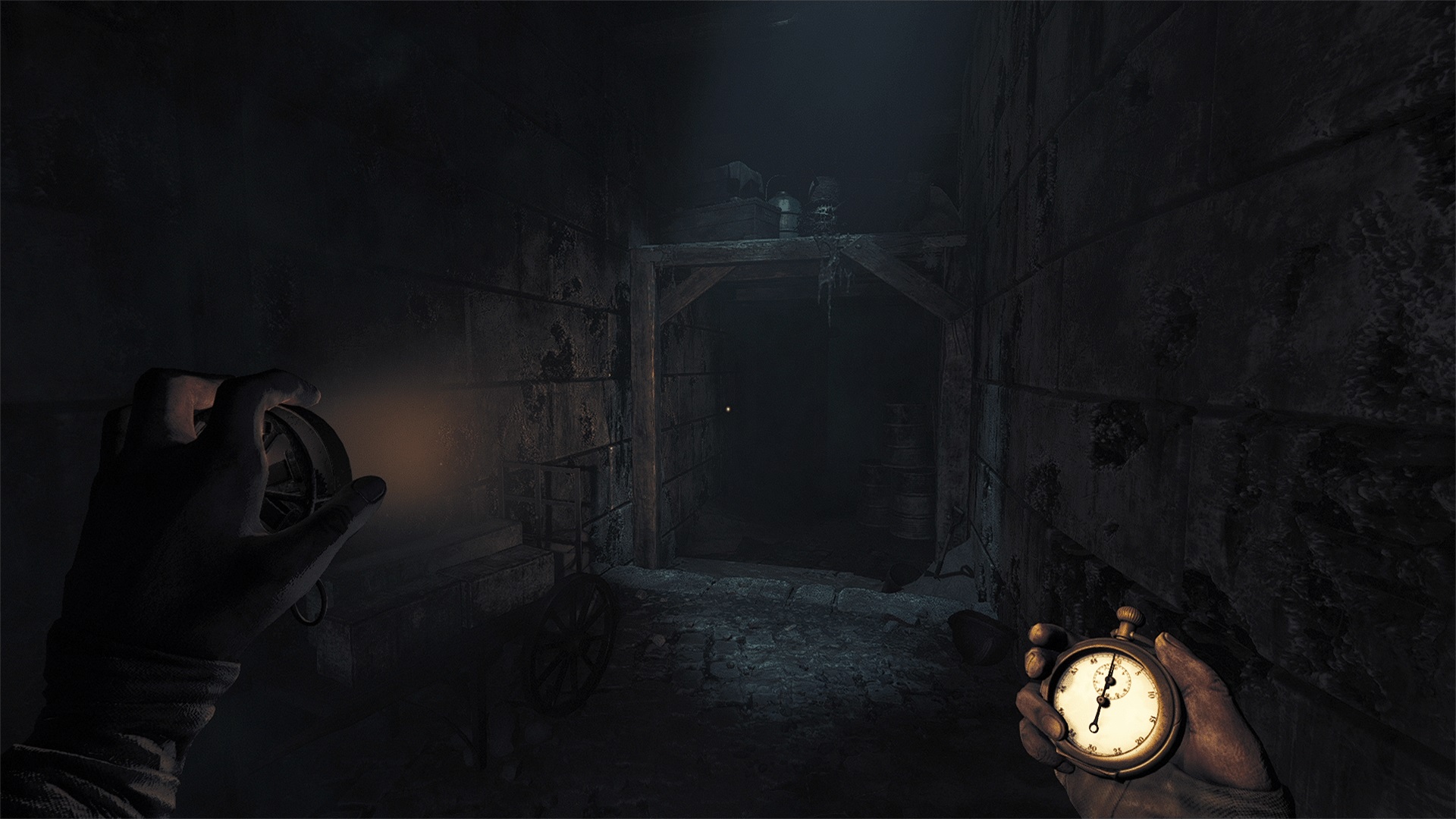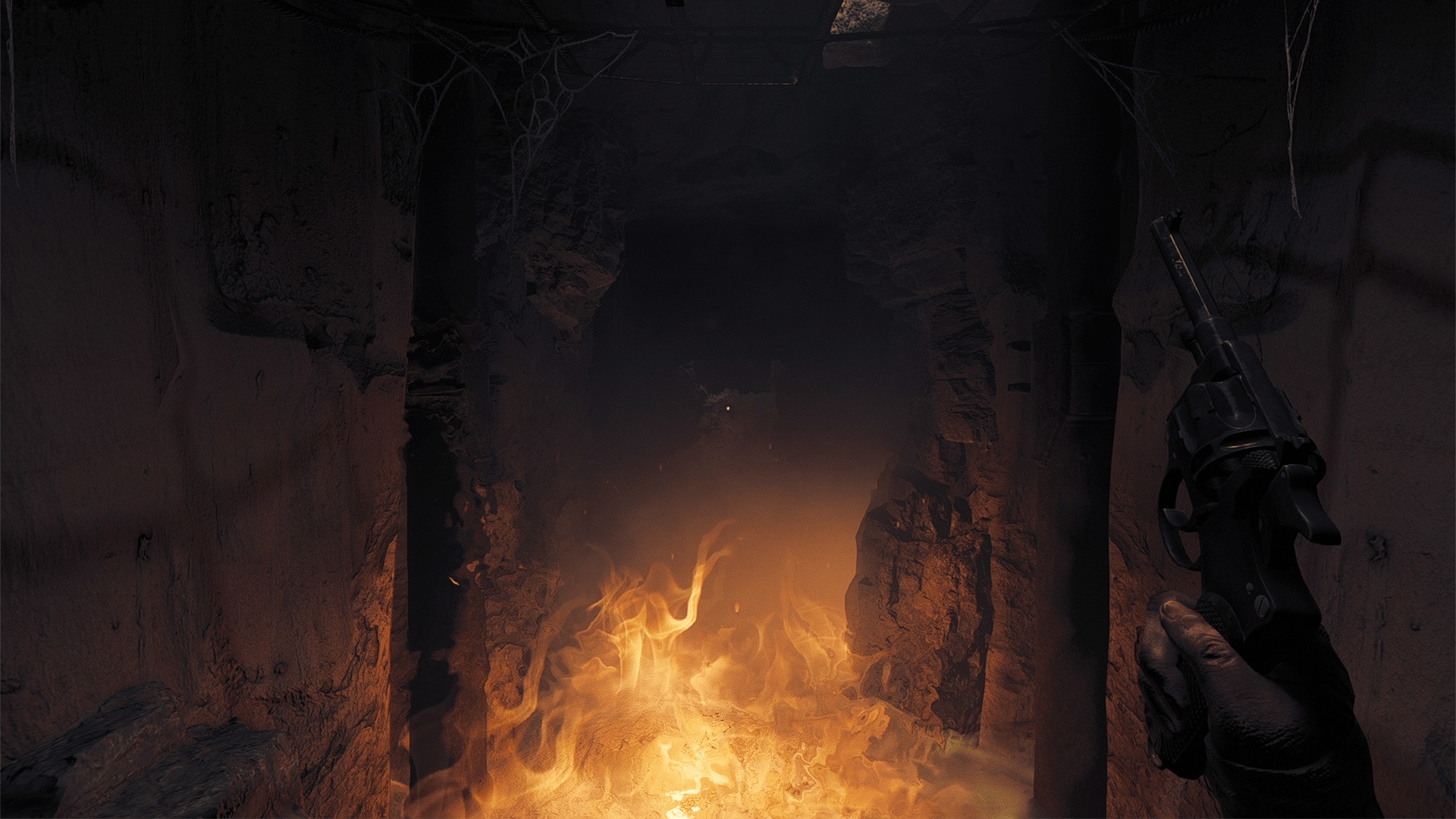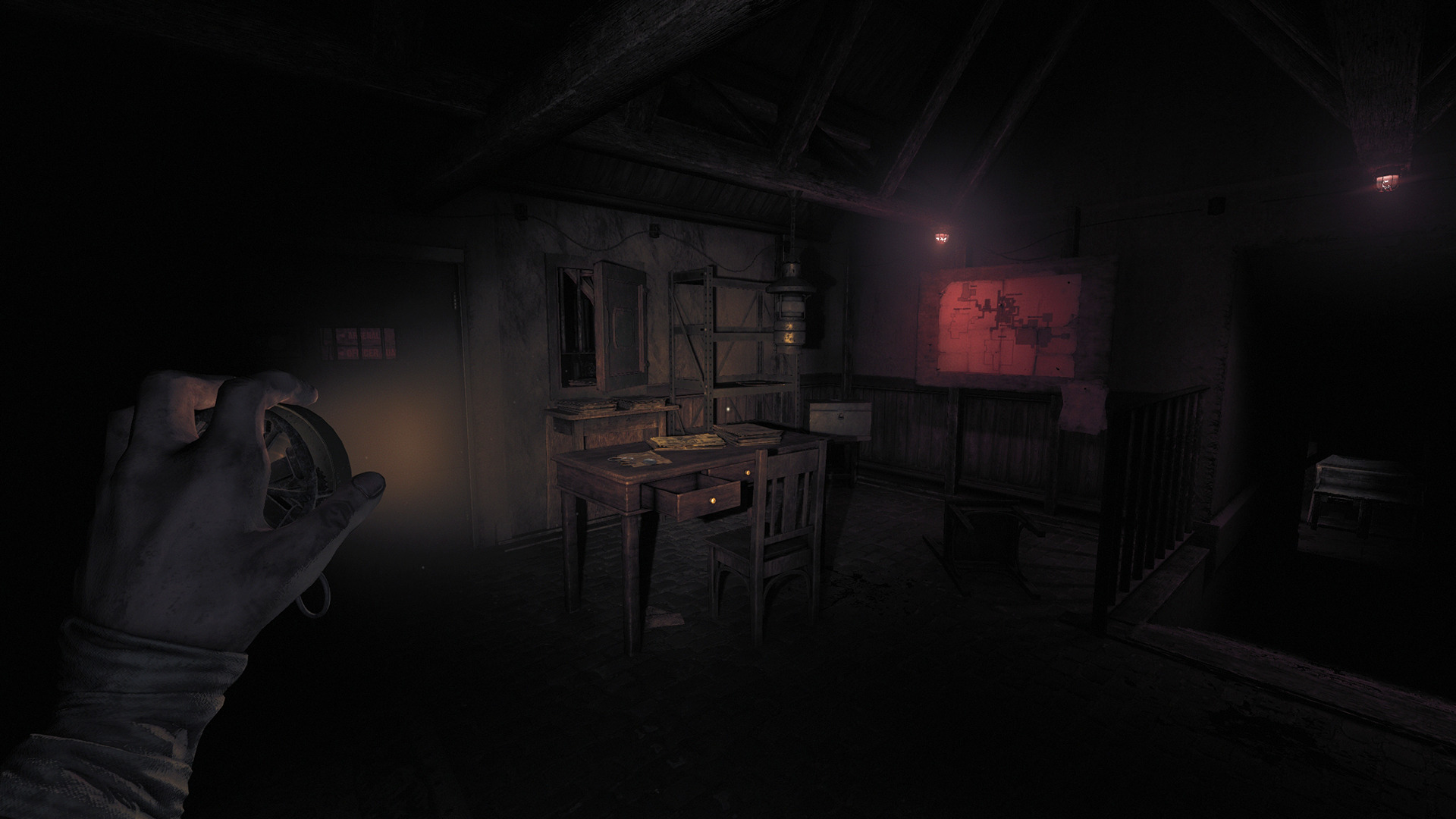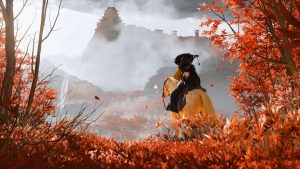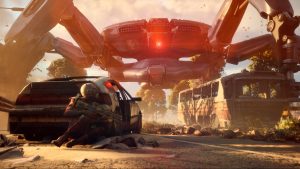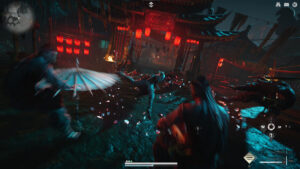
The Amnesia series has become a pillar of the horror genre since its inception in 2010, and its brand of psychological horror has become intrinsically linked with the series and with Frictional Games as a developer. With the upcoming Amnesia: The Bunker, however, the series is heading into uncharted waters. With its semi-open world approach, the inclusion of weapons, a new player-driven gameplay structure, and more, the upcoming horror title is looking to shake up the series’ formula in a variety of ways. To learn more about how these changes will be implemented and how they will affect Amnesia: The Bunker’s overall structure, we recently reached out to its developers with some of our most burning questions. Below, you can read our interview with the game’s creative lead, Fredrik Olsson.
"It’s true that this new focus requires quite a significant departure from the Amnesia formula, but at the same time, I feel there is still a lot of Amnesia left in this game."
Amnesia: The Bunker is departing from the series’ established formula in some pretty significant ways. What was behind the decision to make these changes?
As a studio, we’re driven by a desire to continually explore new ideas and push ourselves creatively. You can say it’s in our DNA, and we simply don’t want to be stuck doing the same thing over and over again. Take, for example, SOMA and Amnesia: Rebirth – both are quite different games when compared to their predecessor, Amnesia: The Dark Descent.
With Amnesia: The Bunker, we have shifted our focus to gameplay. We want to give the player a deeply immersive experience with much more agency and freedom. Unlike our previous titles, The Bunker is a difficult game that requires players to rely on their own instincts and problem-solving skills. It’s reminiscent of the games we grew up with, where experimentation was key and hand-holding was rare.
Given all the changes being made to the formula in Amnesia: The Bunker, how have you ensured that the game doesn’t lose sight of the series’ defining traits?
It’s true that this new focus requires quite a significant departure from the Amnesia formula, but at the same time, I feel there is still a lot of Amnesia left in this game. Just because you have access to weapons does not mean you can simply go in guns blazing. Players will still feel the need to hide or run from their pursuer. It’s all in the balance, and you shouldn’t expect this to be a first-person shooter by any means.
We have also maintained one of the most defining elements of the Amnesia series – the interplay between darkness and light. It’s a bit different this time around, though, since there’s no sanity mechanic in this game. Instead, the gameplay centers around the Bunker’s main generator. The creature that hunts the player prefers to do so in the cover of darkness, meaning that if you fail to keep the generator running, you’re soon going to find yourself in deep shit. This type of mechanic is basically a new and more tangible take on an old formula.
Moreover, we have ensured that the atmosphere in the Bunker remains very similar to what players have grown accustomed to in previous Amnesia games. In summary, while we have introduced new elements, we have worked hard to maintain the core Amnesia experience that our players love.
One of Amnesia: The Bunker’s headlining features is its implementation of a semi-open world map. How will this change the general flow of gameplay and exploration, and what can players expect from the map in terms of size and environmental variety?
The game is a hub-based experience. In the center of the Bunker, you have your safe room – your home base if you wish. That’s where you can save your progress, plan your next move, store resources, and fuel the generator. The rest of the bunker is very much accessible from the outset, with the player having little limitations when it comes to where to go and what to do.
While some tasks require completion to finish the game, it is up to the player to identify, prioritize and then judge how to best complete them. This exploration must be balanced against the dynamic threat that haunts the player, capable of emerging at any moment based on their actions. As such, the gameplay is highly player-driven and significantly different from previous games that relied on a more linear path.
While the environment may not be as large or diverse as Amnesia: Rebirth, the various sub-sections of the Bunker have their own unique characteristics and ambiance. Additionally, there are also a few non-Bunker environments for the player to experience.
"The creature that hunts the player prefers to do so in the cover of darkness, meaning that if you fail to keep the generator running, you’re soon going to find yourself in deep shit. This type of mechanic is basically a new and more tangible take on an old formula."
Talk to us about Amnesia: The Bunker’s randomization. What was behind the decision to implement it, and how significantly does it change things across multiple playthroughs?
One of the core design pillars of this game has been to make it an experience that players will want to revisit, either on their own or after seeing someone else play. We’ve made a conscious effort to avoid linearity and predictability, ensuring that every aspect of the game presents a certain level of challenge, no matter how many times you play it. The player should never know exactly what it will take to overcome an obstacle.
To achieve this, we have opted for a set of mechanics that we believe to make a strong foundation for this type of experience. The generator that continuously burns fuel introduces an element of time and can instantly change your situation if it runs out. Combine this with the dynamic threat that hunts you, loud tools such as the revolver or grenades, and a noisy light source, and you have a very dynamic and unscripted setup. The gameplay is influenced heavily by the player’s actions, ensuring that each playthrough is unique.
But we didn’t want to stop there. We recognized that we could enhance the replayability of the game even further by randomizing certain elements. The location of resources, traps, and important codes are all randomized, with even the codes themselves being randomly generated to prevent cheating.
Together, these elements create a game that evolves differently with each playthrough, providing new and unique situations and challenges each time.
What can you tell us about the ever-present threat that’s lurking in the bunker? Is it the biggest threat that players will be facing, or is it the only one?
The biggest threat of the game is the ever-present monster that hunts you. It crawls around in the walls of the bunker, constantly on the hunt for an opportunity to attack. It reacts to the player’s actions or inability to keep the generator running. While there are other dangers present in the game, the main monster is the most challenging and deadly of them all.
Stalker-type enemies are a mechanic that the horror genre has often made use of, but nailing the execution is often easier said than done. What sort of a balance does Amnesia: The Bunker strike in that regard between having players deal with a constant threat while ensuring that it doesn’t become too overbearing?
To create an effective stalking monster in a game, it is crucial to link its behavior closely with player actions. The stalker’s behavior should not feel too random, but rather have a clear logic that the player can understand. At the same time, some level of uncertainty, variation, or escalation is necessary to prevent the stalker from becoming too predictable and losing its impact on the player. This is particularly important if the player is going to be stalked for an extended period.
In Amnesia: The Bunker, the Stalker’s logic is easy to comprehend: it prefers darkness over light and can hear the player. Now it’s up to the player to work as best they can within those rules. Keep the generator running and make as little noise as possible! If you fail in any of these respects or if things don’t go as you’ve planned, you are likely going to get punished.
If the player ignores or doesn’t try to abide by the simple rules of the stalker, then they might, of course, feel that it becomes overbearing. However, as long as there are ways to play the game without it becoming overwhelming and these ways are not too obscure, the stalker should work out nicely.
"We’ve made a conscious effort to avoid linearity and predictability, ensuring that every aspect of the game presents a certain level of challenge, no matter how many times you play it. The player should never know exactly what it will take to overcome an obstacle."
Amnesia: The Bunker will give its players a revolver, which is a big change for the franchise. Can you tell us about how it’s woven into the gameplay loop, and how much the game will focus on combat as compared to its predecessors?
The revolver is just as much a tool as it is a weapon. It can, for example, be used to shoot open a padlock, set fire to a fuel puddle, or make an explosives barrel explode. While it could be used for defense, the revolver is often considered a last resort due to the limited ammo. It’s not really a matter of combat in that sense but more just another tool at your disposal in your fight for survival.
Roughly how long will an average playthrough of the game be?
For the average player, we estimate the playtime of a single playthrough to be around 4-6 hours, but it can vary quite a bit. The game’s focus is not necessarily on its length but instead on the challenge of surviving. So while some players may finish the game in as little as four hours, others may take their time to explore, think about their next move, experiment, and strategize. In the end, the duration of the game will be significantly influenced by the player’s skills and courage, as well as their preferred playstyle and decision-making. Also, the dynamic and random nature of the game will make each playthrough unique and different, so players can easily get more hours out of the game by replaying it.








